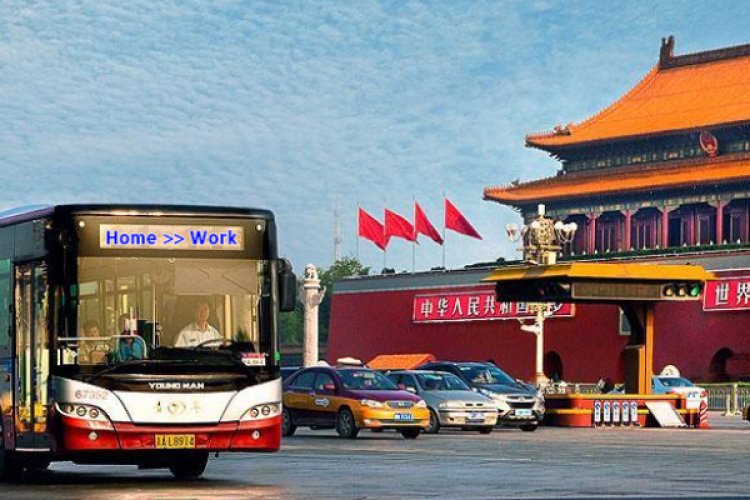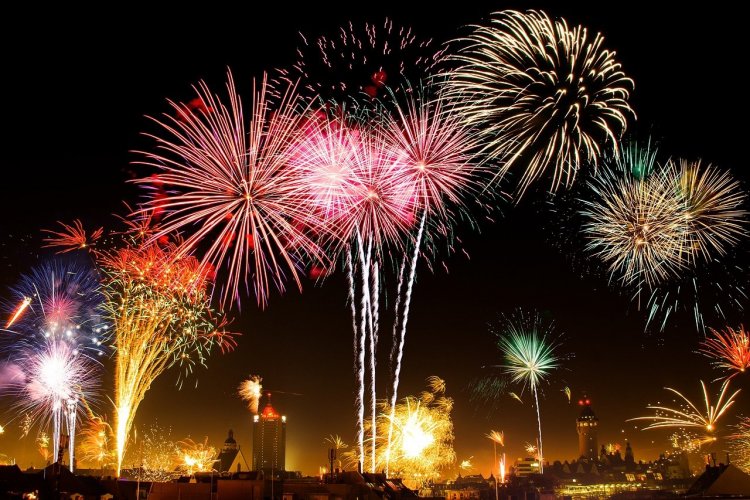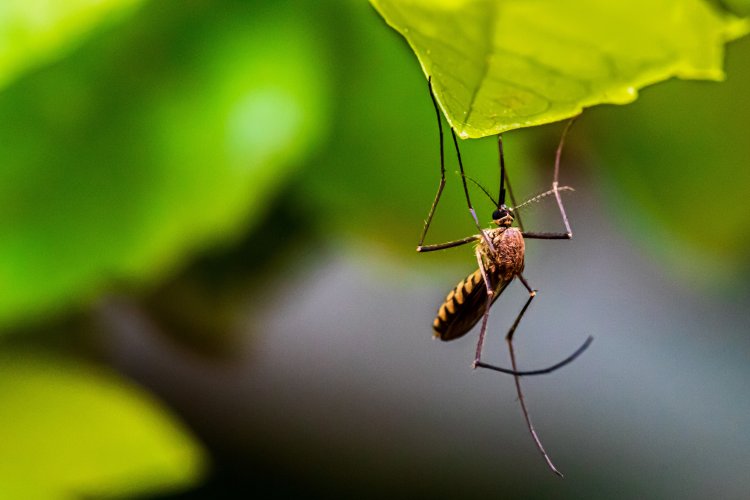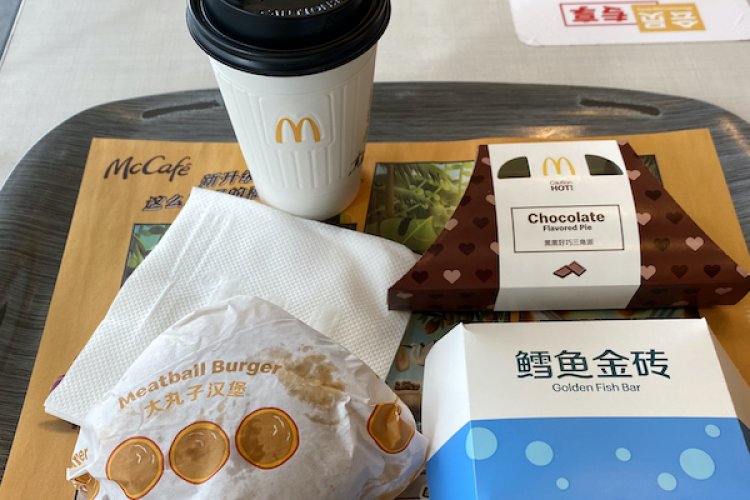Talking Travel: Red Eyes and Night Moves on the Way to Hong Kong
As I write this, no children appear to be urinating in public in Hong Kong.
Your Talking Travel correspondent decided to take his own advice times three for this week’s column. Aside from shifting away from May 1 to take advantage of lower airfares and hotel rates, he also decided to spend a few days in the ultimate weekend getaway from Beijing – Hong Kong – and to try out a flight that this column had written about previously: Dragonair’s new red-eye, departing at 2.50am and arriving at 6.20am. I will now stop writing in the third person.
Red-eye flights always seem like a better idea when you’re booking them than when you’re killing time staying awake before going to the airport. Flying from Los Angeles to New York, or trans-Atlantic/trans-Pacific is one thing; leaving in the small hours to arrive at your destination in prime time. Beijing has needed an early morning flight to Hong Kong – more like a 5am takeoff in order to put an executive at a meeting in Central by 9.30am – for 30 years, and finally Dragonair decided to throw down on what could lead to round-the-clock flights if successful.
Let’s say it: Intra-Asia red-eyes have definitely become less attractive since MH370 took off after midnight from Kuala Lumpur and vanished. In an utterly unbelievable situation, it still seems that had the flight taken place in daylight, we might know where it is.
Beijing Capital International Airport is a strange place at night. It’s the exact opposite of what it is during the day: dark, empty, and quiet. There are no announcements, no tour groups, and few services, although some restaurants are open (see below). Ground staff is none too chatty.
Beware of men who approach passengers, especially foreign passengers, insisting that baggage be wrapped in plastic, for a fee. Ignore them, they are not airport employees and your bags need no such protection. After checking in, move along directly to your gate, as train service between the terminals is greatly reduced in the small hours.
In Terminal 3, Costa Coffee, the McDonald’s on the arrival level, and Lei Cafe are all appear to be open 24 hours. Phrik Thai upstairs near the other restaurants may also be serving late at night. The convenience store is open all night, and beyond immigration, duty-free is also open 24 hours.
There is an interesting mélange of travelers at the airport at 1.30am. Most of the flights scheduled are to destinations in the Russian Far East. The Russian folk dance troupe heading home to Khabarovsk made me think of the air disaster where a Russian charter jet struck a DHL cargo plane in mid-air over Germany (I’m not a nervous flyer), where most of the victims were Russian schoolchildren on holiday. It also highlighted that the single immigration officer on duty spoke fluent Russian, as he asked most of the troupe’s members, students about 10-12 years old, to move back so that he could actually see their faces, rather than just their eyes peering over the high counter.
Most curious was a group of five people I could only describe as scumbags of a bygone era. They looked like they had just emerged from central casting, if the casting call had been for “dirtbags you see while traveling in Thailand.” I couldn’t believe that they were boarding a flight in Beijing headed for Thailand, rather than the other way around. They were dressed for tropical summer, on a night when temperatures hit 13 degrees. There was the backwards Singha Beer baseball cap; the no-sunscreen tan; the inverted pentagram tattoo on the left calf; the shirt open on the side almost all the way down for maximum ventilation; the “dude, I just wiped out on my moped” road-rash bandage on the arm; the guitar traveling as carry-on, without a case; and to round it off, the inappropriately dressed Thai woman in tow, complete with lace hot pants. The details were so perfect, it was like the producers of The Hangover had decided to set Spring Breakers 2 in Southeast Asia, but actually shot the film in Beijing because it was cheaper.
I was keen to see who the crowd would be on the Hong Kong red-eye, currently the only flight of its kind to the southern city. Would it be clubbers who commanded their taxi driver to gun it from Sanlitun, and would arrive just in time but needing water? Or older travelers, who can sleep anywhere anyway, who would arrive at the airport the customary five hours in advance, grab a row of seats at the gate and sack out, getting a full eight hours between the wait and the flight? Or would it be executives who scheduled overnight conference calls, using up the time productively ahead of the flight to Hong Kong that would offer brief respite and a quick breakfast before a 9am presentation? In brief: the older travelers own the night, but most of them seem to be taking connecting flights to somewhere beyond Hong Kong. At least they sleep on planes.
Dragonair offers full dinner service on the flight, missing one key component: the cups of Haagen-Dazs ice cream that have set their menu apart for years. I passed on the meal as a result. By the way, Dragonair is unveiling a new in-flight menu next Tuesday. Talking Travel will be delayed next week to the afternoon bring you full coverage.
Flying this red-eye to Hong Kong has one important advantage: at 2.50am, the air pattern is almost empty. Although weather can always be a factor, the likelihood that the plane will be delayed is greatly reduced, and similarly there shouldn’t be any delays on arrival either.
Two handy tips to speed your exit from Hong Kong International Airport (HKIA): join Cathay Pacific Airlines’ Marco Polo Club frequent flyer program. Even if you never fly on Cathay Pacific, it allows you to then join Hong Kong’s Frequent Traveler Program. It will take about 30 minutes to enroll in person in the immigration area of HKIA on your next trip, but after that, all you need to do to clear Hong Kong Immigration is scan the bar code that will be placed on your passport, then scan a fingerprint, take the printed slip, and you’re done. During peak travel periods, it can cut your wait time by 30-45 minutes.
Also, as most travelers will use the Airport Express to move from HKIA to other parts of Hong Kong, provided that you have sufficient Hong Kong currency, don't bother getting an Airport Express ticket or Octopus card prior to boarding if you’re in a rush. Tickets are only checked when alighting, and either tickets or Octopus cards can be purchased at every Airport Express station upon arrival. It’s not any cheaper but it is more convenient.
Would I take the red-eye again? I’ll tell you next week, after I know how the lack of sleep affects my first full day. This time I got lucky in the sense that The Wharney Hotel, where I’m staying in Wanchai, isn’t full and was able to give me a room upon my arrival at 7am. But if that weren’t true, then there I am, stuck until 2pm check-in with nowhere to shower, change clothes, check e-mail, or whatever. I booked this room via Agoda and got it for quite a bit less than US$100 per night including tax and free Wi-Fi, not bad at all. Aside from being stumbling distance to some of Hong Kong’s better drinking spots, it’s next door to The Flying Pan, one of two locations of a 24-hour breakfast place. For anyone that believes breakfast should be more than just youtiao or jianbing, the most important meal of the day should be enjoyed there.
Talking Travel returns Thursday in its new twice-weekly format. Until then, one road flat safe.
Photo: Steven Schwankert/the Beijinger






